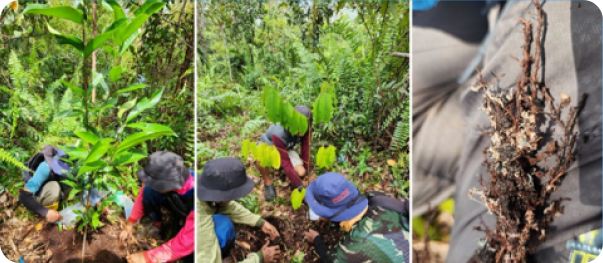Background
Peatlands are globally significant carbon sinks and play a crucial role in the global carbon cycle. Peat swamp forests form where saturated soils or frequent flooding cause organic matter to decay slowly, resulting in soils rich in accumulating organic material. These carbon-water complexes act like giant sponges, absorbing water and storing large amounts of carbon. Depending on the forest’s age and soil depth, they can exceed the carbon sink capacity of nearby lowland deep forests on mineral soils factors of 10 to 20. However, tropical peat forests are becoming increasingly degraded by human activities and climate change impacts, including illegal logging, fires, agricultural land reclamation, and the expansion of palm oil and rubber plantations. This degradation not only significantly reduces surface carbon sinks—90% of the carbon in peat swamp forests is stored underground and often goes unnoticed when destroyed and lost—but also has far-reaching impacts on nature and human communities.
Indonesia accounts for 45% (Applegate et al, 2021) of the world’s tropical peatlands, with peat swamp forests covering open lowlands between major rivers in Sumatra (8.3 million hectares), Kalimantan (6.8 million hectares), and Papua (4.6 million hectares). Over the past two decades, Indonesia has experienced significant peatland degradation, due to logging, agricultural expansion, and fire-related land clearing, resulting in substantial carbon emissions and biodiversity loss. In response, the Indonesian government has developed a national action plan to accelerate the restoration of degrading peat swamp forests. However, restoring these ecosystems is challenging, as it requires careful selection tree species and the production high-quality saplings to safeguard high survival rates, all contributing to the restoration of peat forest ecosystems.
This project aims to restore peat swamp forests in Indonesia, the rehabilitation efforts are strengthened through the application of mycorrhizal fungi which support improved growth rates in indigenous tree species. Given the increasing degradation of peatlands globally, the solutions and lessons learned from this project will serve as valuable models for similar peatland ecosystems.



